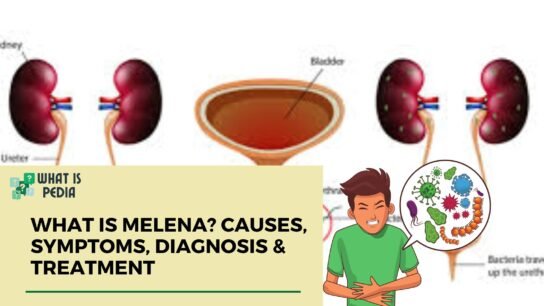Introduction
Opioids are a class of powerful drugs used primarily for pain relief. These substances work by binding to opioid receptors in the brain and spinal cord, blocking pain signals and providing relief from moderate to severe pain. Opioids can be derived naturally from the opium poppy plant or synthesized in laboratories. While they are highly effective in managing pain, their potential for addiction and misuse has made them a subject of concern worldwide.
The history of opioids dates back thousands of years, with ancient civilizations using opium for pain relief. In the 19th century, morphine was widely used, followed by the development of heroin and other synthetic opioids. Over time, opioids have become essential in medical treatments, particularly in managing post-surgical pain, chronic pain conditions, and palliative care for terminal illnesses.
Understanding opioids, their mechanisms, benefits, and risks is crucial for safe and effective use. This article provides an in-depth overview of opioids, covering their types, mechanisms of action, common uses, popular opioid medicines in India, potential risks, addiction concerns, and safer alternatives.
What Are Opioids?
Opioids are a class of drugs that act on the nervous system to relieve pain. They are either derived from the opium poppy plant or synthesized to mimic natural opioid effects.
How Opioids Work
Opioids bind to opioid receptors in the brain, spinal cord, and other areas of the body, reducing the perception of pain. These receptors also influence mood, breathing, and other physiological functions, which explains why opioids can cause drowsiness, euphoria, and respiratory depression.
Opioids vs. Opiates
- Opiates: These are naturally occurring substances extracted from the opium poppy, such as morphine and codeine.
- Opioids: This broader term includes opiates as well as synthetic and semi-synthetic drugs designed to produce similar effects, such as oxycodone, hydrocodone, and fentanyl.
Commonly Used Opioid Tablets
Some widely used opioid medications include:
- Morphine (Severe pain relief)
- Codeine (Mild to moderate pain, cough suppression)
- Oxycodone (Moderate to severe pain)
- Fentanyl (Severe pain, cancer pain management)
- Tramadol (Moderate pain, alternative to stronger opioids)
Types of Opioids
Opioids are classified based on their origin and chemical structure:
1. Natural Opioids
Derived directly from the opium poppy plant, these include:
- Morphine – Used for severe pain relief, commonly in hospitals.
- Codeine – Used for mild to moderate pain and cough suppression.
2. Semi-Synthetic Opioids
Modified versions of natural opioids to enhance potency or absorption:
- Oxycodone – Found in medications like OxyContin and Percocet, used for moderate to severe pain.
- Hydrocodone – Often combined with acetaminophen (Vicodin) for pain relief.
3. Synthetic Opioids
Fully manufactured in laboratories to mimic natural opioids:
- Fentanyl – Extremely potent, used in severe pain cases.
- Tramadol – A weaker opioid with lower addiction potential.
Narcotics Medicine Names and Their Uses
- Methadone – Used for pain management and opioid addiction treatment.
- Buprenorphine – Used in addiction treatment programs.
How Opioids Work: Mechanism of Action
Opioids work by blocking pain signals in the nervous system.
Pain Signal Blockage
When opioids bind to opioid receptors, they block pain signals from reaching the brain, providing relief.
Effects on the Central Nervous System
Opioids can cause sedation, slowed breathing, and a feeling of euphoria due to their effects on the central nervous system.
Role of Endorphins and Opioid Receptors
Opioids mimic endorphins, the body’s natural pain relievers, amplifying their effects and reducing pain sensation.
Common Uses of Opioids
Opioids are primarily used to relieve pain.
Post-Surgical Pain Management
After surgery, opioids help control severe pain, allowing for better recovery.
Chronic Pain Relief
Used for conditions like arthritis, cancer pain, and severe back pain.
Cough Suppression
Codeine and hydrocodone are used in prescription cough syrups.
Diarrhea Treatment
Loperamide, an opioid, is used to treat diarrhea.
Popular Opioid Medicines in India
Some commonly prescribed opioid painkillers in India include:
- Morphine (Sevredol, Morphgesic)
- Tramadol (Ultram, Tramasure)
- Fentanyl patches (Duragesic)
- Oxycodone (OxyNorm, OxyContin)
Prescription regulations in India require strict control over opioid distribution due to misuse concerns.
Opioid Drugs List
Strong vs. Weak Opioids
- Strong: Morphine, Oxycodone, Fentanyl
- Weak: Codeine, Tramadol
Opioids are scheduled drugs under Indian and global drug laws, requiring prescription control.
Benefits of Opioids
- Effective Pain Relief – Best for severe pain.
- Palliative Care – Used in terminal illnesses.
- Trauma and Injury Management – Essential in emergency settings.
Risks and Side Effects of Opioid Use
Common Side Effects
- Nausea
- Dizziness
- Drowsiness
Severe Risks
- Addiction – Long-term use leads to dependence.
- Overdose – Can cause fatal respiratory depression.
Opioid Addiction and Dependence
How Addiction Develops
Opioids create euphoria, leading to misuse and addiction.
Signs of Dependence
- Cravings
- Withdrawal symptoms
- Increased tolerance
Opioid Crisis: A Global Concern
The opioid epidemic has affected many countries, especially the USA, where opioid misuse has led to overdose deaths. Governments are implementing strict regulations to control opioid distribution.
Opioid Alternatives: Safer Pain Management Options
- Non-Opioid Painkillers – NSAIDs, acetaminophen
- Physical Therapy – Reduces chronic pain naturally
- Acupuncture and Herbal Treatments – Alternative pain relief
Conclusion
Opioids are essential for pain management but come with risks. Responsible use and medical supervision are crucial to prevent addiction and side effects. Patients should always consult healthcare professionals before using opioids.
FAQs
Q1: What are opioids used for?
A: Opioids are used for pain relief, cough suppression, and diarrhea treatment.
Q2: Are opioids safe?
A: They are safe when used as prescribed but carry addiction risks.
Q3: What is the difference between opioids and opiates?
A: Opiates are natural (e.g., morphine), while opioids include synthetic drugs (e.g., fentanyl).
Q4: What is the strongest opioid?
A: Fentanyl is among the strongest opioids.
Q5: Can opioids be used for long-term pain management?
A: Long-term use increases the risk of dependence; alternative treatments are recommended.
Previous Blog: Symptoms and Warning Signs of Transient Ischemic Attack (TIA): Causes, Diagnosis & Recovery
This blog covered metabolic syndrome, its causes, symptoms, and prevention strategies.







